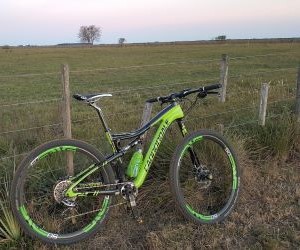Learn how to deal with punctures on long rides with prevention tips, repair techniques, and smart gear choices to keep rolling without stress.
HOW DO I AVOID ENERGY CRASHES ON LONG RIDES?
Long rides can be both exhilarating and punishing if you’re not properly prepared. One of the biggest challenges cyclists face is the dreaded energy crash, when your body runs out of fuel and performance drops sharply. Fortunately, with the right combination of nutrition, pacing, hydration, and recovery strategies, you can avoid bonking and keep your energy steady throughout the ride. In this article, we’ll explore proven methods and practical tips to help you ride stronger, longer, and without hitting the wall.

Fueling your body correctly
One of the most critical aspects of avoiding energy crashes on long rides is how you fuel your body before, during, and after cycling. Carbohydrates are the primary source of energy for endurance exercise, and managing glycogen stores can make the difference between finishing strong and hitting the wall mid-ride.
Pre-ride nutrition
Start fueling well before you clip into your pedals. A balanced meal 2–3 hours before your ride that emphasizes complex carbohydrates, moderate protein, and low fat ensures that your muscles are stocked with glycogen. Foods like oatmeal with fruit, rice with lean protein, or whole-grain bread with nut butter provide a solid foundation.
During the ride
On rides lasting more than 90 minutes, consuming 30–60 grams of carbohydrates per hour helps maintain stable energy. This can come from gels, bars, bananas, or sports drinks. The key is consistency—don’t wait until you feel weak to start fueling.
Pack portable snacks that are easy to digest.
Alternate between solid food and liquid carbs for variety.
Practice with different products to avoid stomach distress.
Aim to eat every 30–45 minutes.
Post-ride recovery
Recovery nutrition matters because it sets you up for your next ride. Within 30–60 minutes of finishing, aim for a 3:1 ratio of carbs to protein, such as a smoothie with fruit and yogurt, or rice and chicken. This replenishes glycogen stores and aids muscle repair.
Managing hydration and electrolytes
Dehydration is a silent performance killer. Even a 2% loss of body weight in fluids can impair endurance, focus, and energy levels. To prevent energy crashes, hydration must be planned as carefully as nutrition.
Pre-ride hydration
Arriving at your ride already dehydrated is a recipe for disaster. Drinking 500–750 ml of water or an electrolyte drink in the 2 hours leading up to the ride ensures you start topped up. Avoid overhydrating, which can dilute sodium levels and lead to hyponatremia.
Hydration on the ride
During long rides, aim to drink 500–1000 ml of fluid per hour depending on heat, humidity, and sweat rate. Adding electrolytes—sodium, potassium, magnesium—helps maintain balance and prevent muscle cramps or fatigue.
Use a mix of plain water and electrolyte drinks.
Weigh yourself before and after rides to estimate fluid loss.
Adjust intake based on sweat rate and weather conditions.
Sip consistently rather than gulping large amounts at once.
Signs of dehydration
Pay attention to early warning signs such as dark urine, dizziness, or a dry mouth. By catching these signals early and adjusting intake, you can prevent the steep decline in energy that dehydration often causes.
Smart pacing and recovery habits
Even with perfect nutrition and hydration, poor pacing can drain your energy reserves prematurely. Strategic effort management combined with good recovery practices ensures your energy lasts for the duration of the ride.
Pacing strategies
Going too hard early is one of the most common mistakes cyclists make. Use tools like heart rate monitors or power meters to stay within an endurance zone for the first half of your ride. This preserves glycogen stores and keeps fatigue at bay.
Start conservatively and build intensity later.
Train with intervals to boost endurance capacity.
Use perceived exertion as a backup when gadgets fail.
Avoid long periods of riding above threshold unless planned.
Recovery routines
Recovery isn’t just what happens after the ride—it begins during. Standing out of the saddle occasionally, stretching at rest stops, and ensuring micro-breaks help stave off muscle fatigue. Post-ride, prioritize sleep, stretching, and active recovery rides to rebuild energy capacity.
Mental strategies
Energy crashes aren’t only physical; mental fatigue plays a huge role. Breaking your ride into smaller milestones, using positive self-talk, and riding with others for motivation can prevent your brain from pulling the plug before your body truly needs to stop.
When nutrition, hydration, pacing, and mindset all work together, you can dramatically reduce the risk of energy crashes and ride at your best for longer.
YOU MAY ALSO BE INTERESTED






